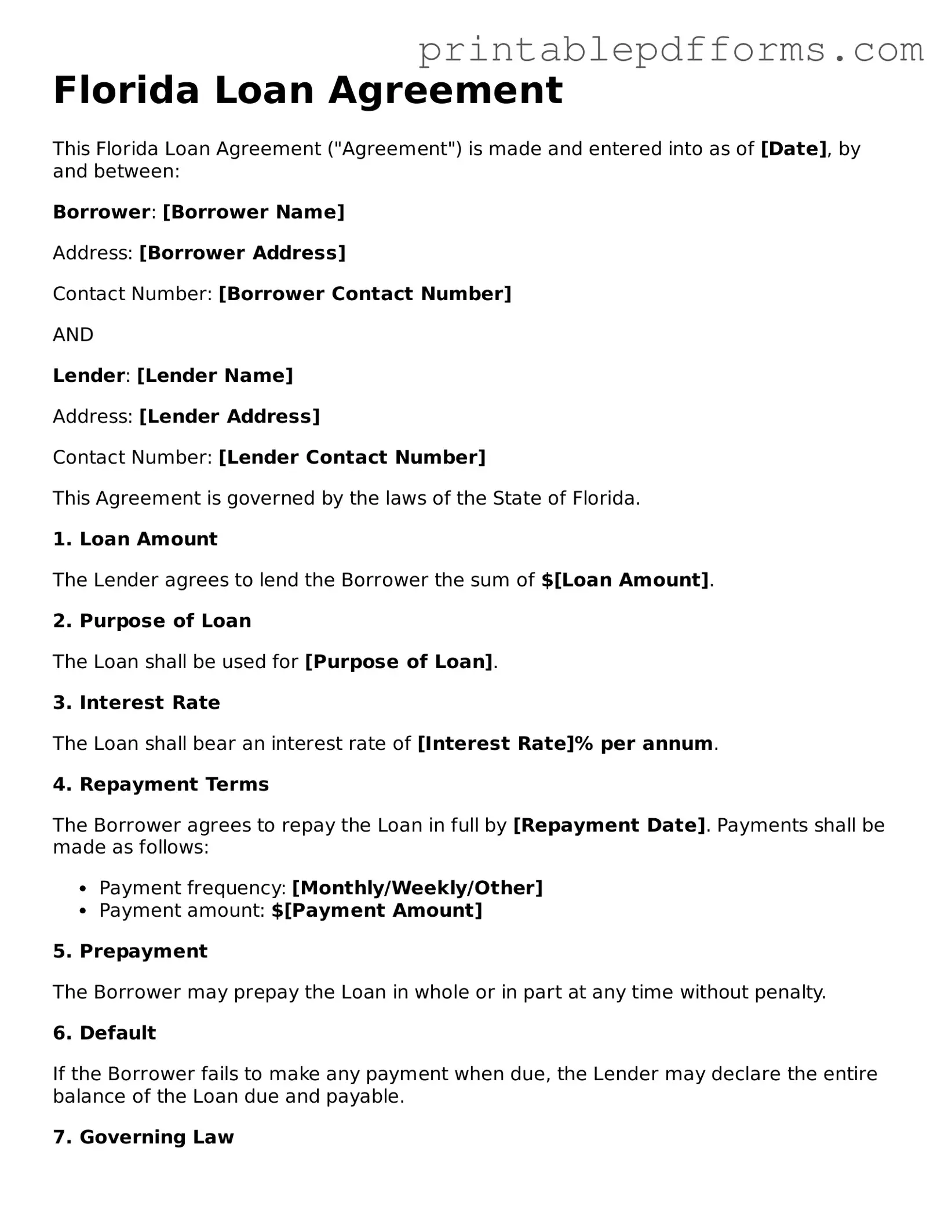Florida Loan Agreement
This Florida Loan Agreement ("Agreement") is made and entered into as of [Date], by and between:
Borrower: [Borrower Name]
Address: [Borrower Address]
Contact Number: [Borrower Contact Number]
AND
Lender: [Lender Name]
Address: [Lender Address]
Contact Number: [Lender Contact Number]
This Agreement is governed by the laws of the State of Florida.
1. Loan Amount
The Lender agrees to lend the Borrower the sum of $[Loan Amount].
2. Purpose of Loan
The Loan shall be used for [Purpose of Loan].
3. Interest Rate
The Loan shall bear an interest rate of [Interest Rate]% per annum.
4. Repayment Terms
The Borrower agrees to repay the Loan in full by [Repayment Date]. Payments shall be made as follows:
- Payment frequency: [Monthly/Weekly/Other]
- Payment amount: $[Payment Amount]
5. Prepayment
The Borrower may prepay the Loan in whole or in part at any time without penalty.
6. Default
If the Borrower fails to make any payment when due, the Lender may declare the entire balance of the Loan due and payable.
7. Governing Law
This Agreement shall be governed by and construed in accordance with the laws of Florida.
8. Entire Agreement
This document represents the entire agreement between the parties. No other understandings, statements, or promises shall be valid or binding.
IN WITNESS WHEREOF, the parties hereto have executed this Loan Agreement as of the day and year first above written.
Borrower Signature: ______________________ Date: _______________
Lender Signature: ______________________ Date: _______________
